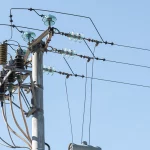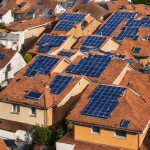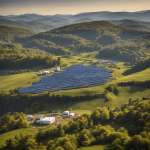
As energy prices continue to fluctuate across the nation, it is important to understand the factors contributing to these changes and how they impact residents in various states. This article will explore the ten states with the highest energy costs, ranked from highest to lowest while providing insight into the reasons behind these rates.
1. Hawaii: Paradise at a Price
Hawaii, an archipelago in the Pacific Ocean, experiences high energy costs primarily due to its isolated geographical location and heavy reliance on imported fossil fuels. As a collection of islands, Hawaii faces unique challenges in its energy supply chain, as it cannot benefit from the interconnected electrical grids and regional energy sharing that mainland states enjoy. Consequently, this isolation necessitates importing large quantities of petroleum and other fossil fuels, with over 80% of Hawaii's energy derived from oil. As a result of the substantial transportation and logistical costs associated with importing these resources, energy prices in Hawaii are inevitably driven upwards.
Additionally, Hawaii's high energy costs can be attributed to its limited indigenous energy resources and infrastructure constraints. Although the state possesses abundant renewable energy potential in the form of solar, wind, and geothermal power, it has yet to fully harness these resources to fully meet its energy needs. Renewable energy sources account for just over 25% of the state's electricity generation. Furthermore, Hawaii's energy infrastructure faces challenges due to its aging grid system and the need for significant investments to modernize and expand capacity. These factors, compounded by the state's high dependence on expensive imported fuels, ultimately contribute to Hawaii's elevated energy costs.
Hawaii has consistently been ranked as the state with the highest energy costs in the nation. According to the U.S. Energy Information Administration (EIA), Hawaii's average residential electricity rate is 32.76 cents per kilowatt-hour (kWh) as of September 2021. The island's isolation and dependence on imported oil for power generation contribute to these high costs.
2. California: The Golden State's Growing Energy Bill
California comes in second, with an average residential electricity rate of 21.70 cents per kWh. The state's strict environmental regulations, reliance on renewable energy sources, and high demand contribute to the increased costs.
California, the most populous state in the US, experiences high energy costs for various reasons, including strict environmental regulations, a growing demand for electricity, and a significant reliance on renewable energy resources. As a leader in ecological sustainability, California has implemented various policies to reduce greenhouse gas emissions and promote cleaner energy sources. While these efforts have contributed to a greener energy landscape, they have also increased costs associated with regulatory compliance and investments in renewable energy infrastructure. The state's Renewable Portfolio Standard (RPS) mandates that 60% of its electricity must come from renewable sources by 2030. It has necessitated substantial investments in solar, wind, and other renewable projects, further driving up energy costs.
Moreover, California's high energy costs can be partly attributed to its growing demand for electricity, driven by a booming population, thriving industries, and increasing adoption of electric vehicles. This mounting demand places significant pressure on the state's electricity grid, necessitating costly infrastructure investments and upgrades to ensure reliability and capacity. Additionally, California's high living and real estate prices contribute to increased operational costs for energy utilities, often passed on to consumers at higher rates. In summary, California's high energy costs result from a combination of environmental regulations, increasing demand, and infrastructure investments, reflecting the state's commitment to sustainability and its unique challenges in meeting the energy needs of its residents. (Source)
3. Massachusetts: New England's Energy Expense
Massachusetts residents pay an average of 21.64 cents per kWh for electricity, making it the third most expensive state for energy costs. Factors such as high population density, aging infrastructure, and a reliance on natural gas contribute to these rates.
Massachusetts, a densely populated state with a thriving economy, faces high energy costs due to a combination of factors, including significant reliance on natural gas, aging infrastructure, and strong electricity demand. According to the U.S. Energy Information Administration, natural gas accounts for over 60% of the state's electricity generation. This heavy dependence on natural gas exposes Massachusetts to price volatility and supply constraints, particularly during winter when the demand for heating fuels intensifies. Additionally, the state's limited pipeline capacity and infrastructure constraints increase energy costs as utilities must meet growing demand and maintain the grid's reliability.
Another factor contributing to Massachusetts' high energy costs is the state's commitment to renewable energy and greenhouse gas reduction initiatives. As part of the Global Warming Solutions Act, Massachusetts has established a goal of reducing greenhouse gas emissions by 80% below 1990 levels by 2050, which has led to increased investments in renewable energy projects and energy efficiency programs. While these initiatives are essential for promoting sustainability and combating climate change, they also contribute to higher energy costs, as utilities must comply with stringent regulations and invest in cleaner energy infrastructure. In summary, Massachusetts' high energy costs can be attributed to its reliance on natural gas, infrastructure challenges, and commitment to environmental sustainability, reflecting the complex interplay of factors shaping the state's energy landscape. (Source)
4. Alaska: The Last Frontier's Costly Energy
Alaska's average residential electricity rate is 21.61 cents per kWh. The state's vast size, remote locations, and harsh weather conditions make energy generation and distribution challenging and costly.
Alaska, the largest state in the US, faces considerable energy challenges due to its remote location, vast size, and extreme weather conditions. These factors contribute to the high energy costs experienced by its residents. According to the U.S. Energy Information Administration, Alaska's energy infrastructure is characterized by a lack of interconnectedness, with many communities relying on isolated microgrids for electricity. This fragmentation of the state's power grid and the logistical difficulties in transporting fuel across immense distances and challenging terrain significantly increase energy costs. Furthermore, Alaska's harsh climate necessitates higher energy consumption for heating, placing additional pressure on the state's energy resources and infrastructure.
In addition to these logistical and geographical challenges, Alaska's energy landscape is marked by a high dependence on petroleum, which fuels roughly 75% of the state's electricity generation. While Alaska is a substantial oil producer, its refining capacity is limited. Consequently, refined petroleum products must often be imported from other states, driving up transportation costs and increasing energy prices. In recent years, efforts have been made to diversify Alaska's energy mix by incorporating renewable resources such as hydroelectric, wind, and solar power. However, these projects are still in the early stages of development, and Alaska continues to grapple with the unique challenges that contribute to its high energy costs. (Source)
5. Rhode Island: America's Smallest State with Big Energy Costs
With an average residential electricity rate of 21.57 cents per kWh, Rhode Island ranks fifth in the nation for energy costs. The state's high population density and reliance on natural gas contribute to these rates.
Rhode Island, the smallest state in the US, contends with high energy costs due to various factors, including its high population density and substantial reliance on natural gas. As the U.S. Energy Information Administration reports, natural gas fuels approximately 96% of Rhode Island's electricity generation. This dependence on a single energy source exposes the state to price fluctuations and potential supply disruptions. Moreover, Rhode Island's location in the densely populated Northeast region results in higher demand for energy and increased competition for limited resources, further driving up energy costs.
Another challenge contributing to Rhode Island's high energy costs is the state's aging energy infrastructure. Like many other parts of the nation, Rhode Island's electricity grid requires significant investments to modernize and expand capacity to meet growing demand. Additionally, the state is actively pursuing renewable energy and energy efficiency initiatives to reduce greenhouse gas emissions and promote sustainability, as mandated by the Resilient Rhode Island Act. While these efforts are crucial for long-term environmental and economic benefits, they also contribute to short-term increases in energy costs as utilities invest in the necessary infrastructure and comply with environmental regulations. In summary, Rhode Island's high energy costs can be attributed to its reliance on natural gas, high population density, and the need for infrastructure investments, reflecting the multifaceted challenges facing the state's energy landscape. (Source)
6. Connecticut: The Constitution State's Energy Conundrum
Connecticut residents pay an average of 21.56 cents per kWh for electricity. Factors such as high population density, aging infrastructure, and a reliance on natural gas contribute to these rates.
Connecticut, located in the northeastern United States, faces high energy costs due to several factors, including its high population density, limited electricity generation capacity, and significant reliance on natural gas. According to the U.S. Energy Information Administration, natural gas fuels approximately 50% of Connecticut's electricity generation. This heavy dependence on natural gas exposes the state to price volatility and potential supply constraints, particularly during periods of high demand. Additionally, Connecticut's location within the densely populated New England region contributes to increased competition for limited energy resources, further driving up energy costs.
Another contributing factor to Connecticut's high energy costs is the state's aging energy infrastructure. Like many other states, Connecticut's electricity grid requires substantial investments to modernize and expand capacity to meet the growing power demand. The state also actively pursues renewable energy and energy efficiency initiatives through the Connecticut Comprehensive Energy Strategy. While these efforts are essential for promoting long-term environmental sustainability and reducing greenhouse gas emissions, they also contribute to short-term increases in energy costs as utilities invest in the necessary infrastructure and comply with environmental regulations. In summary, Connecticut's high energy costs can be attributed to its reliance on natural gas, high population density, and the need for infrastructure investments, reflecting the complex challenges facing the state's energy landscape. (Source)
7. New Hampshire: The Granite State's Rocky Energy Landscape
New Hampshire's average residential electricity rate is 19.63 cents per kWh.
New Hampshire, located in the northeastern United States, grapples with high energy costs due to a combination of factors, including its high electricity prices and dependence on heating oil. As reported by the U.S. Energy Information Administration, nearly 40% of New Hampshire households rely on heating oil as their primary heating fuel, exposing them to price fluctuations in the petroleum market. Additionally, New Hampshire's electricity prices are among the highest in the nation, mainly due to the state's limited generation capacity and the challenges associated with procuring affordable energy resources.
Another factor contributing to New Hampshire's high energy costs is the state's commitment to renewable energy and greenhouse gas reduction initiatives. To minimize its environmental impact and promote a cleaner energy future, New Hampshire has implemented a Renewable Portfolio Standard (RPS), which mandates that 25.2% of the state's electricity must come from renewable sources by 2025. While pursuing renewable energy projects and energy efficiency measures is essential for long-term environmental and economic benefits, it also contributes to short-term increases in energy costs, as utilities must comply with stringent regulations and invest in cleaner energy infrastructure. In conclusion, New Hampshire's high energy costs can be attributed to its high electricity prices, reliance on heating oil, and commitment to environmental sustainability, reflecting the diverse challenges facing the state's energy landscape. (Source)
8. Vermont: The Green Mountain State's Steep Energy Costs
Vermont ranks eighth in the nation for energy costs, with an average residential electricity rate of 19.35 cents per kWh. The state's commitment to renewable energy sources and environmental regulations contribute to these rates.
Vermont, picturesque and situated in the northeastern United States, contend with high energy costs due to various factors, including its commitment to renewable energy sources and stringent environmental regulations. As reported by the U.S. Energy Information Administration, Vermont has set ambitious targets for renewable energy generation, aiming to reach 90% of its total energy consumption from renewable sources by 2050. While this commitment to clean energy is commendable and crucial for long-term sustainability, it also contributes to higher energy costs in the short term, as utilities invest in the necessary infrastructure and comply with environmental regulations.
Another factor contributing to Vermont's high energy costs is the state's reliance on heating oil and propane for residential heating, with more than 60% of Vermont households utilizing these fuels. These energy sources are subject to price fluctuations in the petroleum market, increasing consumer costs. Additionally, Vermont's location in the New England region, characterized by high electricity prices and limited generation capacity, further exacerbates the state's energy costs. In conclusion, Vermont's high energy costs can be attributed to its commitment to renewable energy, environmental regulations, and dependence on heating oil and propane, reflecting the complex interplay of factors shaping the state's energy landscape. (Source)
9. New York: The Empire State's Expensive Energy Empire
New York's average residential electricity rate is 19.30 cents per kWh. Factors such as high population density, aging infrastructure, and a reliance on natural gas contribute to these rates.
New York faces high energy costs due to various factors, including its high population density, aging infrastructure, and substantial reliance on natural gas. As the U.S. Energy Information Administration reveals, natural gas accounts for approximately 42% of New York's electricity generation. This considerable dependence on a single energy source exposes the state to price volatility and potential supply constraints. Additionally, New York's location within the densely populated Northeast region contributes to increased competition for limited energy resources, further driving up energy costs.
Another challenge contributing to New York's high energy costs is the state's aging energy infrastructure. Like many other parts of the nation, New York's electricity grid requires significant investments to modernize and expand capacity to meet growing demand and maintain the grid's reliability. Furthermore, the state is actively pursuing renewable energy and energy efficiency initiatives, as mandated by the Climate Leadership and Community Protection Act (CLCPA), which aims to achieve 70% renewable electricity by 2030 and 100% carbon-free electricity by 2040. While these efforts are essential for promoting long-term environmental sustainability and combating climate change, they also contribute to higher energy costs, as utilities must comply with stringent regulations and invest in cleaner energy infrastructure. In summary, New York's high energy costs can be attributed to its reliance on natural gas, high population density, and the need for infrastructure investments, reflecting the multifaceted challenges facing the state's energy landscape. (Source)
10. Maine: The Pine Tree State's High Energy Costs
Maine rounds out the top 10 with an average residential electricity rate of 17.86 cents per kWh. The state's rural landscape, harsh weather conditions, and reliance on natural gas contribute to these rates.
Maine, known for its scenic landscapes and rugged coastline, experiences high energy costs due to several factors, including its heavy reliance on heating oil and high electricity prices. According to the U.S. Energy Information Administration, Maine ranks first in the nation regarding the percentage of households that use heating oil as their primary heating fuel, with 62% of homes relying on this energy source. Heating oil is subject to price fluctuations in the petroleum market, and its widespread use in Maine contributes to increased energy costs for residents during the cold winter months.
Another factor contributing to Maine's high energy costs is the state's high electricity prices, among the highest in the nation. Maine's electricity market is influenced by the broader New England region's energy landscape, where constraints on natural gas pipeline capacity and limited generation capacity lead to increased electricity costs. Maine's rural nature and dispersed population also create challenges for energy infrastructure development and distribution, further driving up energy costs. In summary, Maine's high energy costs can be attributed to its reliance on heating oil, high electricity prices, and the challenges posed by the state's rural landscape, reflecting the diverse factors shaping Maine's energy landscape.
In conclusion, the energy landscape in the United States is marked by a complex interplay of factors that contribute to varying energy costs across different states. From Hawaii's geographical isolation to California's commitment to environmental regulations and New England's reliance on heating oil to infrastructure challenges faced by rural states like Maine, each state contends with a unique set of circumstances that drive their energy costs. As the nation transitions towards renewable energy sources and invests in modernizing the grid, these energy costs may shift and evolve. Residents must stay informed about the factors influencing their energy costs, empowering them to make informed decisions regarding energy usage and conservation. By understanding each state's diverse challenges, policymakers and industry stakeholders can work together to create a more sustainable and cost-effective energy future for all Americans.

James Smith is our editor. He is an accomplished and versatile news writer with over a decade of experience covering a wide range of topics, including politics, business, and real estate. Throughout his career, James has been dedicated to uncovering the truth and presenting unbiased, factual reporting to his audience.















